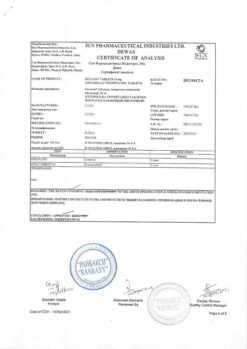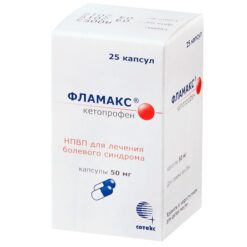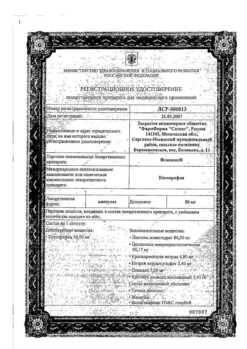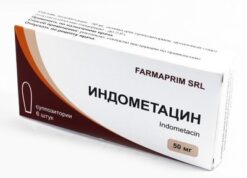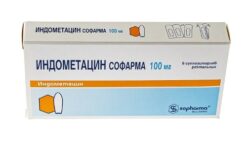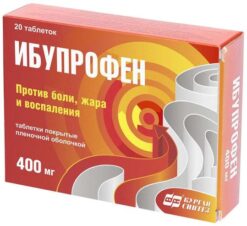No products in the cart.
Dialrapid, 50mg sachet 9 pcs
€17.45 €15.13
Description
For short-term treatment of the following acute conditions:
- post-traumatic pain, inflammation and swelling, such as due to ligament injuries;
- postoperative pain, inflammation and swelling, such as after dental or orthopedic surgery;
- Migraine attacks;
- spinal pain syndromes;
- Rheumatic diseases of extra-articular soft tissue.
Isolated fever is not an indication for the use of the drug Dialrapid.
Indications
Indications
For the short-term treatment of the following acute conditions:
post-traumatic pain, inflammation and swelling, for example due to ligament damage;
post-operative pain, inflammation and swelling, for example after dental or orthopedic surgery;
pain and/or inflammation accompanying gynecological diseases, for example, primary dysmenorrhea or adnexitis;
migraine attacks;
pain syndromes from the spine;
rheumatic diseases of extra-articular soft tissues.
An isolated increase in temperature is not an indication for the use of Dialrapid.
Pharmacological effect
Pharmacological effect
PHARMACOTHERAPEUTIC GROUP:
Special instructions
Special instructions
Damage to the gastrointestinal tract
With the use of all NSAIDs, including diclofenac, bleeding or ulceration/perforation of the gastrointestinal tract, in some cases fatal, has been observed. These phenomena can occur at any time during treatment in patients with or without previous symptoms or a history of gastrointestinal diseases. In older patients, such complications can have serious consequences. If patients develop bleeding or ulceration of the gastrointestinal tract while using the drug Dialrapid, the drug should be discontinued.
To reduce the risk of toxic effects on the gastrointestinal tract in patients with gastrointestinal ulcers. especially those complicated by bleeding or perforation in history, as well as in elderly patients, the drug should be used in the minimum effective dose.
Patients with an increased risk of developing gastrointestinal complications, as well as patients receiving therapy with low doses of acetylsalicylic acid or other drugs that can increase the risk of gastrointestinal damage should take gastroprotectors (for example, proton pump inhibitors or misoprostol).
Patients with a history of gastrointestinal lesions, especially the elderly, should report any unusual abdominal symptoms to their doctor.
Patients with bronchial asthma
Exacerbation of bronchial asthma (NSAID intolerance/bronchial asthma provoked by NSAIDs), angioedema and urticaria are most often observed in patients with bronchial asthma, seasonal allergic rhinitis, nasal mucosal polyps, chronic obstructive pulmonary disease or chronic infectious diseases of the respiratory tract (especially those associated with allergic rhinitis-like symptoms). In this group of patients, as well as in patients with allergies to other drugs (rash, itching or urticaria), special caution should be observed when using the drug Dialrapid (preparedness for resuscitation measures).
Skin reactions
Serious dermatological reactions such as exfoliative dermatitis, Stevens-Johnson syndrome, toxic epidermal necrolysis, in some cases fatal, have been reported very rarely with the use of NSAIDs, including diclofenac. The highest risk and frequency of severe dermatological reactions were observed in the first month of treatment with diclofen. If patients receiving Dialrapid develop the first signs of skin rash, mucosal lesions or other symptoms of hypersensitivity, the drug should be discontinued. In rare cases, patients who are not allergic to diclofenac may develop anaphylactic/anaphylactoid reactions when using Dialrapid.
Effects on the liver and bile ducts
Since during the period of use of the drug Dialrapid, as with other NSAIDs, there may be an increase in the activity of one or more liver enzymes, during long-term therapy with the drug, monitoring of liver function is indicated as a precaution. If liver dysfunction persists or progresses or signs of liver disease or other symptoms occur (for example, eosinophilia, rash, etc.), the drug Dialrapid should be discontinued. It should be borne in mind that hepatitis during the use of the drug Dialrapid can develop without prodromal phenomena.
Effects on the kidneys
Fluid retention and edema have been reported during therapy with NSAIDs, including diclofenac, so special care should be taken and monitoring of renal function is recommended in patients with hypertension, impaired function
heart or kidneys, elderly patients, patients receiving diuretics or other drugs that affect renal function, as well as in patients with a significant decrease in the volume of circulating blood plasma of any etiology, for example, in the period before and after major surgical interventions. After cessation of drug therapy, normalization of renal function indicators to initial values is usually observed.
Effects on the cardiovascular system
Therapy with NSAIDs, including diclofenac, particularly long-term and high-dose therapy, may be associated with a small increased risk of serious cardiovascular thrombotic events (including myocardial infarction and stroke).
In patients with diseases of the cardiovascular system and a high risk of developing diseases of the cardiovascular system (for example, with arterial hypertension, hyperlipidemia, diabetes mellitus, smokers), the drug should be used with extreme caution, at the lowest effective dose for the shortest possible duration of treatment, since the risk of thrombotic complications increases with increasing dose and duration of treatment. During long-term therapy (more than 4 weeks), the daily dose of diclofenac in such patients should not exceed 100 mg. The effectiveness of treatment and the patient’s need for symptomatic therapy should be periodically assessed, especially in cases where its duration is more than 4 weeks. The patient should be instructed to immediately seek medical help if the first symptoms of thrombotic disorders (for example, chest pain, shortness of breath, weakness, speech disturbances) appear.
Impact on the hematopoietic system
The drug Dialrapid, like other NSAIDs, can temporarily inhibit platelet aggregation. Therefore, patients with hemostasis disorders require careful monitoring of relevant laboratory parameters. The drug Dialrapid is recommended only for short-term treatment, however, with long-term use of the drug Dialrapid, like other NSAIDs, systematic monitoring of the peripheral blood picture is indicated.
Masking signs of an infectious process
The drug Dialrapid, like other NSAIDs, due to its pharmacodynamic properties, can mask the manifestations of infectious diseases.
Use simultaneously with other NSAIDs
Dialrapid should not be used concomitantly with other NSAIDs, including selective COX-2 inhibitors, due to the risk of increased incidence of adverse events.
Impact on the ability to drive vehicles and/or machinery
Patients who experience visual disturbances, dizziness, drowsiness, vertigo or other disorders of the central nervous system while using the drug Dialrapid should not drive vehicles or operate machinery.
Active ingredient
Active ingredient
Diclofenac
Composition
Composition
1 sachet contains:
Contraindications
Contraindications
Hypersensitivity to the active substance and other components of the drug, as well as to other non-steroidal anti-inflammatory drugs (NSAIDs);
exacerbation of gastric and duodenal ulcers, ulcerative bleeding, perforation;
inflammatory bowel diseases (Crohn’s disease, ulcerative colitis) in the acute phase;
complete or incomplete combination of bronchial asthma, recurrent polyposis of the nose or paranasal sinuses and intolerance to acetylsalicylic acid or other NSAIDs (including a history);
severe liver dysfunction, renal failure (GFR less than 15 ml/min/1.73 m2);
chronic heart failure, functional class II-IV according to the NYHA classification;
clinically confirmed coronary heart disease;
diseases of peripheral arteries and blood vessels of the brain;
uncontrolled arterial hypertension;
III trimester of pregnancy;
breastfeeding period.
The drug should not be used in patients with phenylketonuria, as it contains a source of phenylalanine.
The drug is not recommended for use in children under 14 years of age (due to the difficulty of dosing the drug).
WITH CAUTION
When using the drug Dialrapid and other NSAIDs, it is necessary to exercise caution and carefully monitor patients with symptoms/signs indicating lesions/diseases of the gastrointestinal tract (GIT) or with anamnestic data suggesting ulcerative lesions of the stomach or intestines, bleeding or perforation; in patients with a history of Helicobacter pylori infection, ulcerative colitis, Crohn’s disease, with a history of liver dysfunction and in patients with complaints that suggest gastrointestinal disease. The risk of developing gastrointestinal bleeding increases with increasing doses of NSAIDs or with a history of gastrointestinal ulcers, especially bleeding and perforation of the ulcer and in elderly patients.
Particular caution should be exercised when using the drug Dialrapid in patients receiving drugs that increase the risk of gastrointestinal bleeding: systemic corticosteroids (including prednisolone), anticoagulants (including warfarin), antiplatelet agents (including clopidogrel, acetylsalicylic acid) or selective inhibitors serotonin reuptake (including citalopram, fluoxetine, paroxetine, sertraline).
Caution is necessary when using the drug Dialrapid in patients with mild to moderate liver dysfunction, as well as in patients with hepatic porphyria, since the drug can provoke attacks of porphyria. Particular caution is required when treating patients with impaired renal function, including chronic renal failure (GFR 15-60 ml/min/1.73 m2), dyslipidemia/hyperlipidemia, diabetes mellitus, arterial hypertension, when treating patients who smoke or abuse alcohol, when treating elderly patients, patients receiving diuretics or other drugs that affect renal function, as well as patients with a significant decrease in circulating blood volume (CBV) of any etiology, for example, in the periods before and after major surgical interventions.
Dialrapida should be used with caution in patients with defects in the hemostatic system.
Caution should be exercised when using Voltaren Rapid® in patients at risk of developing cardiovascular thrombosis (including myocardial infarction and stroke).
Caution should be exercised when using Dialrapid in elderly patients. This is especially true in frail or low-weight elderly people.
Side Effects
Side Effects
Below are the adverse events (AEs) that were identified during clinical trials, as well as when using diclofenac in clinical practice.
To assess the frequency of AEs, the following criteria were used: “common” – >1/100, 1/1000, 1/10000, <1/1000, “very rare” - <1/10000, including isolated cases. AEs are grouped in accordance with the system-organ class of the medical dictionary for regulatory and legal activities MedDRA; within each class, AEs are listed in descending order of frequency of occurrence; within each group, allocated by frequency of occurrence, AEs are distributed in decreasing order of their importance.
Disorders of the blood and lymphatic system: very rarely – thrombocytopenia, leukopenia, hemolytic anemia, aplastic anemia, agranulocytosis.
Immune system disorders: rarely – hypersensitivity, anaphylactic/anaphylactoid reactions, including decreased blood pressure (BP) and shock; very rarely – angioedema (including facial swelling).
Mental disorders: very rarely – disorientation, depression, insomnia, nightmares, irritability, mental disorders.
Nervous system disorders: often – headache, dizziness; rarely – drowsiness; very rarely – sensitivity disorders, including paresthesia, memory disorders, tremors, convulsions, anxiety, acute cerebrovascular accidents, aseptic meningitis.
Visual disturbances: very rarely – visual disturbances (blurred vision), diplopia.
Hearing disorders and labyrinthine disorders: often – vertigo; very rarely – hearing impairment, tinnitus.
Cardiac disorders: uncommon – myocardial infarction, heart failure, palpitations, chest pain.
Vascular disorders: very rarely – increased blood pressure, vasculitis.
Disorders of the respiratory system, chest mediastinal organs: rarely – bronchial asthma (including shortness of breath); very rarely – pneumonitis.
Gastrointestinal disorders: often – abdominal pain, nausea, vomiting, diarrhea, dyspepsia, flatulence, loss of appetite; rarely – gastritis, gastrointestinal bleeding, vomiting blood, melena, diarrhea mixed with blood, gastric and intestinal ulcers (with or without bleeding, stenosis or perforation, with the possible development of peritonitis); very rarely
– stomatitis, glossitis, damage to the esophagus, the occurrence of diaphragm-like strictures in the intestine, colitis (nonspecific hemorrhagic colitis, ischemic colitis, exacerbation of ulcerative colitis or Crohn’s disease), constipation, pancreatitis, dysgeusia. Disorders of the liver and biliary tract: often – increased activity of aminotransferases in the blood plasma; rarely
– hepatitis, jaundice, liver dysfunction; very rarely – fulminant hepatitis, liver necrosis, liver failure. Disorders of the skin and subcutaneous tissues: often – skin rash; rarely – urticaria; very rarely – bullous dermatitis, eczema, erythema, erythema multiforme, Stevens-Johnson syndrome, Lyell’s syndrome (toxic epidermal necrolysis), exfoliative dermatitis, itching, alopecia, photosensitive reactions, purpura, Henoch-Schönlein purpura.
Renal and urinary tract disorders: very rarely – acute kidney injury (acute renal failure), hematuria, proteinuria, tubulointerstitial nephritis, nephrotic syndrome, papillary necrosis.
General disorders and disorders at the injection site: rarely – swelling.
Cardiovascular disorders
Data from clinical studies indicate a slight increase in the risk of developing cardiovascular thrombotic complications (for example, myocardial infarction), especially with long-term use of diclofenac in high doses (daily dose more than 150 mg).
Visual impairment
Visual disturbances such as blurred vision, blurred vision or diplopia appear to be class effects of NSAIDs and are reversible upon discontinuation of use. A possible mechanism for the development of such disorders is inhibition of the synthesis of prostaglandins and other related substances, which alters the regulation of retinal blood flow, which is manifested by potential visual disturbances. If such symptoms develop during diclofenac therapy, an ophthalmological examination should be considered to exclude any other causes.
If any of the side effects indicated in the instructions
worsen, or you notice any other side effects
effects not listed in the instructions, please inform your doctor.
Interaction
Interaction
The following types of drug interactions were observed when using the drug Dialrapid and/or other dosage forms of diclofenac.
Overdose
Overdose
Symptoms: vomiting, gastrointestinal bleeding, diarrhea, dizziness, tinnitus, convulsions. In case of significant poisoning, acute renal failure and liver damage may develop.
Storage conditions
Storage conditions
In a dry place at a temperature not exceeding 25°C.
Shelf life
Shelf life
3 years.
Manufacturer
Manufacturer
Mifarm S.p.A., Italy
Additional information
| Shelf life | 3 years. |
|---|---|
| Conditions of storage | In a dry place at a temperature not exceeding 25 ° C. |
| Manufacturer | Mipharm S.p.A., Italy |
| Medication form | Powder for preparation of solution for oral administration |
| Brand | Mipharm S.p.A. |
Related products
Buy Dialrapid, 50mg sachet 9 pcs with delivery to USA, UK, Europe and over 120 other countries.



